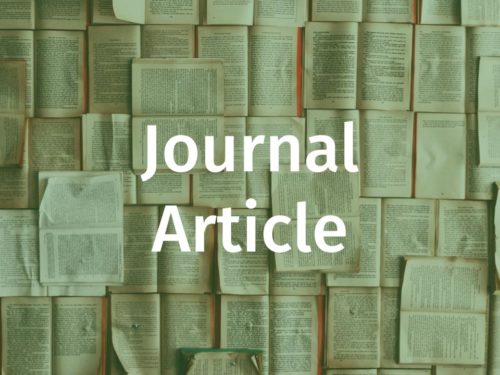Would an exit permit for Yulia Tymoshenko to Berlin follow the logic of humanism for a better medical treatment or Brussels’ blackmailing Kyiv? Is the ban of Moldovan agricultural goods from Russian markets a consequence of a better health policy in Moscow or a revenge for EU-interventions into bilateral relations between Moldova and the Russian Federation? Does the liberalisation of the EU-European gas market aim at improving the energy-supply of the customers or at displacing Russian providers from the market? All these questions are posed in the Western media and their answers are discussed widely. There is a whole journalistic agenda dealing with the worsening relations between European Union and Russia. But very seldom, if at all, the political and economic events concerning the relationship between Brussels and Moscow are connected with Brussels’ initiative to enlarge its influence far beyond the actual EU-borders.
We speak about the Eastern Partnership (EaP), an official body under the control of the European Commission. It was founded to strengthen multiple ties between Brussels and six post-Soviet countries to help the respective political elites and economic forces to orient themselves towards the West and thereby cut close relations with Moscow. The Eastern Partnership exists since May 2008, when Poland’s foreign minister Radoslaw Sikorski and his Swedish colleague, Carl Bildt, presented their joint initiative to the public. It does not stand alone, but exists under the framework of the «European Neighbourhood Policy», officially launched in 2004 to accompany the enlargement of the European Union’s sphere of interest to the South and the East. It serves as an umbrella over different offers to integrate countries outside the European Union on a peripheral scale, such as the French attempt to reach out towards the Southern Mediterranean or the «Eastern Partnership». Nicolas Sarkozy’s minister of foreign affairs, Bernard Kouchner, underlined the idea, when he said in 2008: «It is no sin to go East and South at the same time».
An analysis on the «European Neighbourhood Policy» in «International Affairs» by two Spanish political scientists, Esther Barbé and Elisabeth Johansson-Nogués, characterized the actual management of peripheral integration by naming it «the use of incentives (‘carrots’) in lieu of sanctions (‘sticks’)». In reality carrots and sticks are in parallel use, carrots for the willing, sticks for the reluctant states.
The Eastern Partnership (EaP) includes Armenia, Azerbaijan, Belarus,Georgia, Moldova, and Ukraine. The war in Georgia in August 2008 accelerated its establishment. Since the beginning, Brussels is concerned about the membership of Belarus and considers Minsk to be ruled by an authoritarian dictator. On the other hand Baku’s leader was never blamed in the same way, although Azerbaijan’s democratic record actually is worse than the Belorussian one. This distinction perfectly reflects the economic interests behind EU’s policy. Minsk was not fully accepted and did not take part in the first meetings due to Brussels’ strong anti-Belorussian rhetoric, which was topped in September 2011, when the EU decided to invite the Belorussian opposition to the EaP-meeting.
The official language of the «Eastern Partnership» speaks of «shared values» and «offers to deeper integration with the EU structures by encouraging and supporting (the six member states) in their political, institutional, and economic reforms based on EU standards». Sentences like «following the principles of market economy and good governance» sound a bit more concrete. They express Brussels’ determination to use the «Eastern Partnership» as an instrument to form large parts of the post-Soviet bloc along the needs of the European Union. Economically this includes open borders for EU-exports and investments, control of imports and use of cheap work force. The economic enlargement needs to be backed and secured by political and juridical institutions favourable to the project, therefore the so-called «institution building» represents one of the key factors in the whole partnership program. The disruption of traditional political relations and economic ties with Russia turn out to be the geopolitical effect of the story. It follows the model of EU-enlargements as it took place between the Baltics and Croatia; all these countries had to give up preferable trade agreements with non-EU-partners when they entered Brussels’ Union.
The «Eastern Partnership» project is defined by four main topics: Institution building, energy security, regional development and economic integration. Institution building goes along with catchphrases like «good governance» or «rule of law». They all aim at the creation of a new administration following the corpus of EU-laws as they were fixed in the «Community acquis». This accumulated legislation of the European Union translates the four main capitalist freedoms into 80.000 pages of some 20.000 legal measurements, namely the free flow of capital, commodities, services and (partly) work force. In the case of six Eastern member states of the EaP the integration idea gives priority to the strong Western Global players over relatively week Eastern competitors. The exception of Ukraine capital in some branches might be possible, but is a relative one, if we remember the second privatization of Krivorijstal steel-works, the country’s biggest enterprise, under Timoshenko in October 2005. Some months before, Krivorijstal had been re-nationalized and thereby taken away from an Ukrainian consortium consisting of the two oligarchs Viktor Pintchuk and Rinat Akhmetov and sold to the world’s largest steel producer, the group Mittal. This example shows a concrete outcome of institution building favourable to Western interests. The argument of Timoshenko at the time, that Krivorijstal was privatized too cheaply in June 2004 under Leonid Kutchma, sounds familiar for somebody who followed privatization processes throughout the 1990s and is not specific for Krivorijstal.
«Energy security» within the EaP reflects the situation of the EU-gas market and the European fear to become dependent from the Russian supplier «Gazprom». Liberalisation is the magic word also in this sphere too. But its meaning is different, because «Gazprom» as the biggest player for gas on the continent could take over the market under a liberal flag. Therefore Brussels is planning to split hardware from software, in other words gas supply from gas transport. With the so-called «Third energy package» Brussels tries to avoid foreign ownership over EU-pipelines. The same model of splitting infrastructural bodies into separate firms is (or is planned to be) done in the railway sector, where the hardware of the rails stay in state property, while the «software» of the trains is open to private investment.
Another program of the «Eastern partnership» focuses on «regional development» and thereby tries to copy an instrument of integration, which is very expensive for the European Union. Its aim: to counter-balance inequalities between poor and rich regions by subsidising the poor ones. Theoretically this program stands against the principles of the free market philosophy. Practically it does not. On the one hand, because structural inequalities like the uneven division of labour or the unequal exchange (the systematic transfer of surplus from peripheral to core countries) are not touched at all, on the other hand, because supra-state subsidies can only be given to a region, if the respective poor state or region is able to contribute a certain amount of money to the project. The EU-experience shows that peripheral regions normally have not enough means to contribute their part to regional development projects. Under the existing relations within the EU, equalizing unequal intra-regional or intra-state relations are not functioning. On the level of EaP is seems even more difficult to achieve this aim.
The forth topic seems to be the most important one: «Economic integration». As stated above and seen during the enlargement process of the European Union since the late 1990s, integration of weak economies increases existing imbalances and further contributes to their peripheralisation, which has a colonizing effect. The imbalance is evident, when almost no Eastern investor or enterprise is capable to take over Western competitors or to obtain a leading position in the respective branch. Western investors on the contrary enlarge their sphere of influence due to their financial capacities and with the help of «Community acquis» and «Eastern partnership». So it is logic that the search for new markets belongs to the key elements to obtain growth.
Offer to peripheral integration: Association Agreement. The example of Ukraine
The actual budget of the «Eastern Partnership» project is a relatively small one. From 2010 to the end of 2013, 600 million Euros were used for different projects. Financially weak, the EaP-project seems to have more ideological and geopolitical power than economic means. But we should not forget the proceedings applied within the «Eastern Partnership». All multilateral efforts of the EaP are planned to culminate in bilateral agreements. The signing of such agreements could take place at the next EaP-summit end of November 2013 in Vilnius. Ukraine, Georgia, and Moldova are invited to sign Association Agreements with Brussels.
The «Eastern Partnership» is organized in a multilateral frame, but aims at bilateral treaties, the so-called Association Agreements with the European Union. Values like democracy, human rights, sustainable development, and a free market economy are offered. But the concrete possible outcome of this multilateral cloud is a bilateral contract with Brussels. During the enlargement process in the 2000s, when the European Union got eleven and a half new members (2004: Poland, Hungary, the Czech and the Slovak republic, Slovenia, the three Baltic states, Malta, the Greek part of Cyprus –officially the whole island; 2007: Romania and Bulgaria), multilateralism did not play a big role. Every new EU-member state had to run through a special treatment. With the exception of Cyprus and Malta, it always started with the accession to NATO. After this military initiation rite the «Community acquis» was signed. What is extremely important: Negotiations between Brussels and the respective candidates did not take place in the sense, that the two sides discussed different viewpoints on more than 30 chapters of the «Community acquis». On the contrary: the «Community acquis» was slipped over national laws of the accession states. This fact is evident when you look at the outcome of the EU-enlargement: it was only possible to postpone the implementation of certain EU-laws for a couple of years, no country could maintain a national position if it contradicted EU-legislation. Even officials confessed that no real negotiations took place during the enlargement procedure: For example in France: There a parliamentary report of 1998 revealed French deputies’ fear, that the new Eastern European EU-members could change the existing balance of power by entering the EU. These fears were dispersed in the Assemblée nationale with the following argument: «The enlargement negotiations are no traditional negotiations seeking for compromises between different interests, but they function as negotiations for accession, where one party (the accession candidate) reaches a given aim with the help and under surveillance of the other party (the European Union)». The French deputies were set at ease; and the accession candidates were not worried. The six members of the «Eastern partnership» should be worried in knowledge of this fact.
Important economic and political elites in the EaP-member states see it differently. Let us have a look at the most crucial and central state, Ukraine. During Yulia Tymoshenko’s administration Ukraine has expressed enthusiasm about the EaP-project. Deputy prime minister at the time, Hryhoriy Nemyria, saw the «Eastern Partnership» as entrance ticket towards EU-membership and praised its modernising effect on Ukrainian economy and society. Similar arguments can be heard from some oligarchs, for example the owner of «Roshen Confectionary Corporation», Petro Poroshenko, when he stated in September 2013: «The European integration is our future and the Customs Union is our past. And this is it», the Kyiv Post reported. The question that arises is, if the Ukrainian president in charge, Viktor Yanukovych, dares to follow the footsteps of the orange orientation.
What can Kyiv expect from signing the Association Agreement with Brussels? 27 pages of the written agenda of the EU-Ukraine Cooperation Council in June 2013 make it evident: the preparations for the Association Agreement do not function at eye level, the text shows a clear submission of Ukraine’s whole legislation and a political, social and military adaption to EU’s guidelines. In Chapter «Foreign and Security Policy» one can read about the necessity to «increase interoperability (…) through involvement of the units of the Armed Forces of Ukraine into the formation of EU Multinational Tactical Battle Groups» and «continue consultations on sanctions applied by the EU». Under the headline «Justice, Freedom and Security issues» Brussels asks to «bring Ukrainian system of Protection of Personal Data into conformity with EU standards», intensify cooperation with the EU-border police Frontex and «pursue the visa dialogue with the aim to establish a visa-free regime between the EU and Ukraine». What is delicate about this last point: the visa-free regime already exists, but it is semipermeable and only valid for EU-Europeans going (as tourists) to Ukraine, while Ukrainian citizens do need a visa to enter the EU.
The chapter «Economic cooperation» shows that Brussels also wants to interfere in inner politics from financial to social affairs when it asks for «sharing the experience of the EU, including from European Central Bank (ECB), on monetary exchange rate and financial and banking sector regulations and supervision polities», «implementing fiscal and expenditure reforms, covering the pension system and public debt management» and «reducing the involvement of the State in setting prices and introducing procedures for full cost recovery in line with EU best practices». In ordinary language: monetary policy is going to be controlled by the ECB, and social policy is submitted to the restrictive regime of austerity packages. All peripheral EU-member states suffer from this policy. The EU «best practices» turn out to be the worst experiences for them.
Energy co-operation in Brussels’ words consists of two main points: abolishment of state subsidies for electricity and gas «to ensure full payments» and «integration of the united power system of the Ukraine into the Union of Central European electricity networks». The EU-parameter for Ukraine railway system sounds very similar: «Resolving issues relating to the interoperability of different track gauge» and «implementing railway sector reform», in other words: to split infrastructure (railways) from transport (trains) for a later privatisation.
These are the corner pillars of the EU enlargement project, interfering in all possible spheres of national and local politics and economics… Integration within a certain area is necessarily defined by boundaries, where integration ends and disintegration starts. It is no wonder, that Moscow is worried about «Eastern Partnership» and EU’s Association Agreements. Both target not only the traditional spheres of Russian interests, but also actual (geo)political and economic relations. Russia’s most advanced multilateral body for integrating former Soviet republics is the «Customs Union» of Russia, Belarus, and Kazakhstan. It was created in 2010 as a counterweight to the EU integration project. Since then a conflict fought out by words, tariffs and trade-barriers accelerates.
Moscow’s «Customs Union» is offering cheap gas and open markets. If the six Eastern partners favoured Brussels’ model, the Kremlin will impose protectionist measures on respective products. How these product bans would function one could already see in some cases, when Moldavian wines or Ukrainian chocolates were banned from the Russian market. Officially the argument was quality concerns, but in reality the ban was part of a small economic war going on between Moscow and Brussels. The same confrontation can be seen around Kaliningrad oblast, when Russia and Lithuania threat each other to block the roads for lorries.
Both sides – Brussels and Moscow – oscillate between blackmailing and offering. Sometimes real arguments are exchanged. For example, when Vladimir Putin’s special adviser for integration matters, Sergei Glazyev, went to Ukraine and warned Kyiv’s administration to risk a loss of 10 billion US-$, if Ukraine signs a free trade agreement with the EU and thereby introduces new barriers between the Ukrainian and the Russian market. Brussels and Moscow agree on the fact that it is incompatible to sign EU’s Association Agreement and reach for membership in the «Customs Union» at the same time. Yanukovych seems to be ready for the step towards the West. And the Ukrainian government already approved the draft resolution agreement with the EU. It will be presented in Vilnius on November 29.
West or East? The «Eastern Partnership» summit in Vilnius will contribute to clear the front. Moldova, Brussels’ star student, and Georgia are ready to sign their respective Association Agreements with the EU. Chisinau is heading towards EU-membership, while Tbilisi’s road to membership may be blocked because of its unclear territorial status. For Azerbaijan and Belarus, the so-called black sheep of the six ex-Soviet republics, Association Agreements are not on the agenda in Vilnius. And what about Ukraine? Ukraine is the key country in the geographical middle of Europe. Regardless if Kyiv signs, postpones or rejects Brussels’ offer of peripheral integration, new geopolitical and economic borderlines in Europe will be drawn.
This article has originally been published on strategic-culture.org , Nov. 8th 2013










